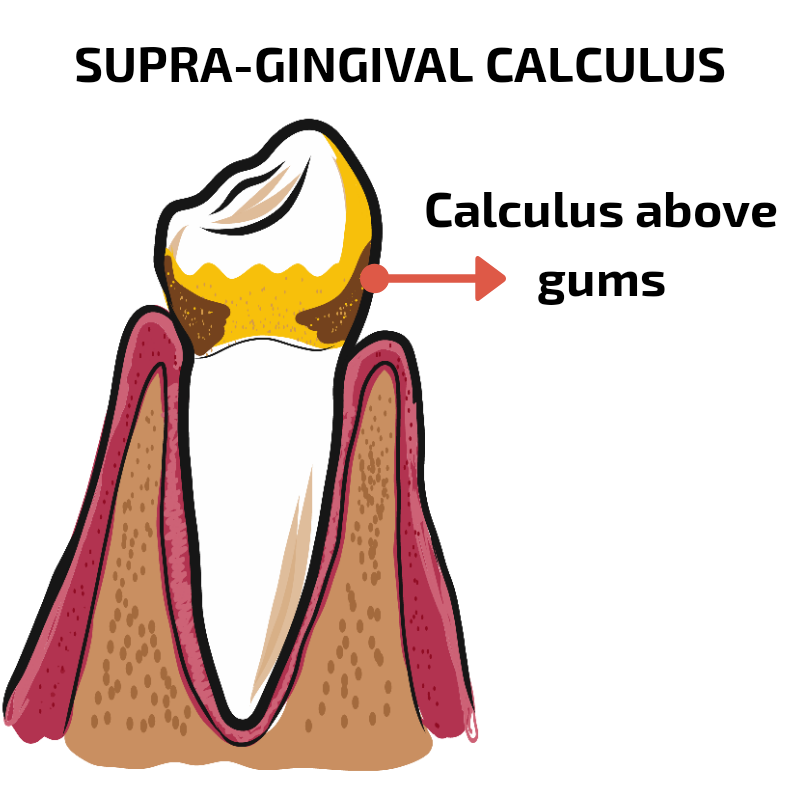It was 10 in the morning. I had just finished a case and was waiting for the next patient. A 35-year-old male patient slowly walked into my office and took a seat in the patient chair. During the examination, he asked me an interesting question about tartar on his teeth.
Patient: Doctor, I brush twice daily, but I still have a lot of calculus on my teeth. Can you suggest a solution?
Myself: I checked his oral cavity and found more calculus on his teeth. I advised him to get a dental cleaning (oral prophylaxis/scaling). But then, he surprised me with his response.
Patient: I had my teeth cleaned just a month ago.
I realized that many of you might have similar concerns. So, in this article, we will explore everything you need to know about managing dental calculus.
Take the first step to a better Oral health!
Get tips on Oral health and discover ways to improve your Dental health. Sign up today
What is Tartar or Dental Calculus / Dental Plaque?
Dental tartar is calcified debris that gets attached around the teeth. The sticky food particles mix with salivary proteins to form dental plaque. This plaque sticks to the teeth and slowly becomes mineralized due to the deposition of calcium and other minerals from saliva. Once mineralized, this solidified structure is called tartar or calculus.

Black and Green Tartar
Tartar is prone to picking up food stains, which is why it can range in color from yellow to a greenish-brown tint. In patients who smoke, tartar tends to turn black due to the deposition of smoke particles during calculus formation. Green tartar is often seen in children and appears as a dark green color due to chromogenic bacteria. Professional scaling is necessary to remove such tartar.
Why Do Some People Get More Tartar While Others Get Less?
The amount of tartar formation depends on various factors, such as the composition of saliva. People with more minerals in their saliva tend to develop more tartar. A person’s lifestyle also affects tartar formation. For instance, patients who consume milk or coffee before bed, or eat sticky foods like sweets, are at a higher risk. Since saliva’s cleansing action is minimal at night, food debris can more easily stick to teeth, leading to increased tartar formation.
Why Is There More Calculus on the Backside of My Teeth?
Typically, a large amount of calculus forms on the backside of the lower front teeth. This happens because saliva tends to stagnate between the tongue and the floor of the mouth, providing more opportunity for debris to calcify in that area.
Best Toothpaste for Tartar Removal?
Toothpaste with more abrasives can remove tartar better, but they can also damage the surface of the teeth. Therefore, I suggest that there isn’t a “best” toothpaste for tartar removal. The most effective solution is to visit a dentist for professional scaling.
How Can I Prevent Dental Plaque Formation on My Teeth?
You can prevent tartar formation by following these steps:
- Brush twice daily. Brushing before bed is especially important.
- Use dental floss. Flossing helps reduce tartar buildup between teeth.
- Avoid eating before bed. Avoid sticky foods like sweets and dairy products before sleeping.
- High-fiber food. Eating high-fiber foods can help reduce tartar buildup.
- Stay hydrated. Regular water intake can prevent tartar formation, especially for people with dry mouth (xerostomia).
- Home remedies. Occasionally brushing with kitchen salt or baking soda may help, but these should be done cautiously to avoid damaging the teeth and gums.
How to Remove Tartar?
Here are the treatment options for removing tartar:
- Mild tartar/dental plaque: Deep brushing may help remove it over time.
- Mild to moderate tartar/calculus: A single professional scaling session at the dentist is usually enough.
- Severe tartar/calculus: This may require scaling and root planing. In cases with bone loss, additional procedures like flap surgery might be necessary.
Tartar Buildup in Children
Calculus formation in children is a serious issue. Poor oral hygiene, lack of proper guidance during brushing, and consuming chocolates and sweets at the wrong times can lead to increased tartar buildup. This can result in gum disease.
Why Should Tartar Be Removed?
Tartar buildup can lead to gum disease (periodontitis), which can cause the gums to recede, making the teeth loose. If tartar is left untreated, it can also contribute to conditions like bacterial infective endocarditis, where bacteria from the mouth enter the bloodstream and affect the heart valves.
Conclusion
Tip 1: Brushing twice a day along with flossing helps manage dental calculus.
Tip 2: Professional scaling (dental cleaning) every six months is recommended.
Tip 3: Be cautious with home remedies like salt, baking soda, or vinegar, as overuse can damage your gums and teeth.
If you have any questions or need more details, feel free to post them in the comment section! For more articles visit dentadigest.com
- Is oral hygiene compulsory for kids? - January 13, 2023
- How to Choose the Best Dental Crown for Your Smile? - December 8, 2022
- Who needs antibiotics before dental work? What is antibiotic prophylaxis? - October 31, 2022




Pingback: WHY ARE MY TEETH YELLOW? DENTAL FLUOROSIS - DENTA DIGEST
Pingback: Geographic tongue -what does it mean? - DENTA DIGEST
Pingback: GET RID OF CANKER SORES IN 7 STEPS - DENTA DIGEST
Pingback: WHAT ARE YELLOW TEETH? AMELOGENSIS IMPERFECTA | DENTA DIGEST
Thank you provided this excellent teeth tips.
Pingback: Swollen gums with braces. What does it mean? | DENTA DIGEST
Pingback: GET RID OF CANKER SORES IN 7 STEPS | Dentadigest